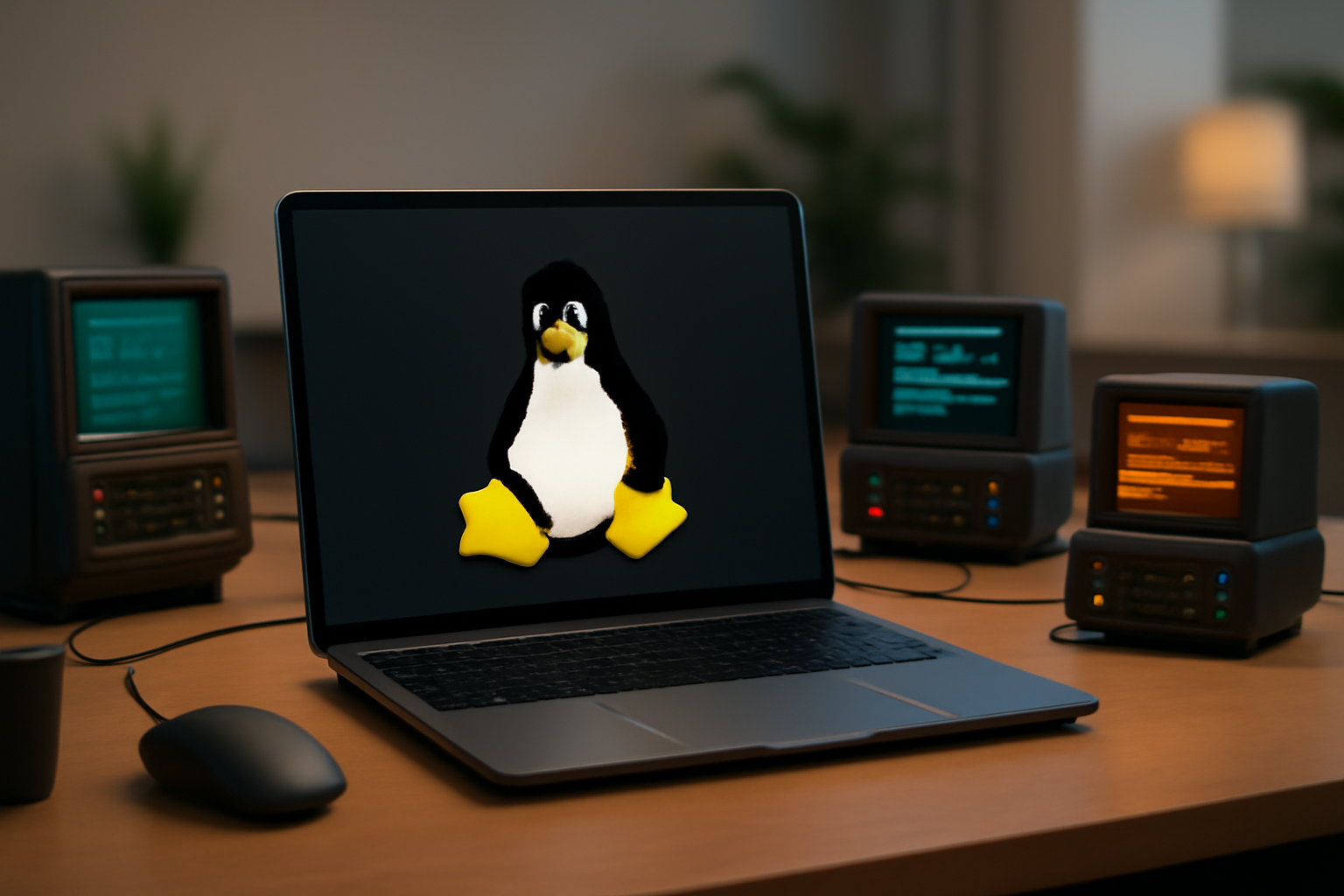The Linux Mascot and the Power of Terminal Multiplexers
By Lucas Gouveia / How-To Geek
If you’ve ever dabbled in Linux or followed the open-source community, you’re probably familiar with the iconic Linux mascot: Tux the penguin. Tux has become a symbol not only of the Linux kernel but also of the vibrant, passionate world surrounding it. In many illustrations and setups, you’ll find Tux comfortably working away on a laptop, often surrounded by multiple terminal windows — a nod to the power and flexibility that Linux offers to users, especially those who love the command line.
Who is Tux, the Linux Mascot?
Tux was created in 1996 by Larry Ewing after Linus Torvalds, the creator of Linux, expressed his fondness for penguins. The name “Tux” is believed to be short for “Torvalds UniX.” Over time, Tux has become more than just a logo; it’s a friendly face that reminds us of the collaborative spirit and freedom at the core of Linux.
Whether you’re a seasoned sysadmin, a developer, or a hobbyist, Tux is a comforting symbol of the open-source ethos. You’ll often see Tux depicted with laptops or surrounded by terminal windows — highlighting the Linux environment’s emphasis on the command line and productivity.
The Magic of Terminal Multiplexers
One of the reasons Linux users love the terminal is its incredible flexibility. But when working on complex projects, juggling multiple terminal windows can become overwhelming. This is where terminal multiplexers like tmux and GNU Screen come into play.
Terminal multiplexers allow you to open and manage multiple terminal sessions within a single window or remote connection. This means you can split your terminal screen into multiple panes, switch between different sessions effortlessly, and even keep your sessions running after disconnecting from a remote server. For anyone who spends a lot of time in the command line, these tools are invaluable.
Why Use Terminal Multiplexers?
- Organization: Keep multiple tasks visible and accessible without cluttering your desktop.
- Persistence: Maintain running processes even if your connection drops.
- Efficiency: Quickly switch between projects, compile code, monitor logs, and more.
Imagine Tux working on a Linux laptop with multiple terminal panes open — compiling software in one pane, tailing logs in another, and editing configuration files in yet another. This setup perfectly captures the productivity and flexibility Linux users enjoy.
Getting Started with tmux
If you’re new to terminal multiplexers, tmux is a great place to start. It’s lightweight, easy to install, and widely supported across Linux distributions.
- Install tmux: Most distros include tmux in their repositories. For example, on Ubuntu or Debian:
sudo apt update
sudo apt install tmux
- Start a tmux session:
tmux
- Basic commands:
- Press
Ctrl + B, then%to split the window vertically. - Press
Ctrl + B, then"to split horizontally. - Press
Ctrl + B, thenArrow Keysto navigate panes. - Press
Ctrl + B, thenDto detach from the session (leave it running). - Reattach with
tmux attach.
With just these simple commands, you can start managing multiple tasks efficiently within a single terminal window — just like the Linux mascot might!
Linux Apps to Enhance Your Experience
Beyond terminal multiplexers, Linux offers a rich ecosystem of applications that can improve your workflow and productivity. If you’re setting up a new Linux PC or just looking to optimize your environment, consider checking out this curated list of essential Linux apps by How-To Geek. It covers everything from productivity tools to system utilities, ensuring a smooth and enjoyable Linux experience.
Final Thoughts
Tux the penguin on a laptop surrounded by terminal multiplexers is more than just a cute image — it represents the essence of Linux: powerful, flexible, and user-centric. Whether you’re a casual user or a command-line maestro, embracing tools like tmux can significantly boost your productivity and enjoyment.
So next time you open your terminal, channel a little of that Tux spirit. Dive into multiplexers, explore new apps, and make the Linux environment truly your own.
Happy hacking!

Leave a Reply